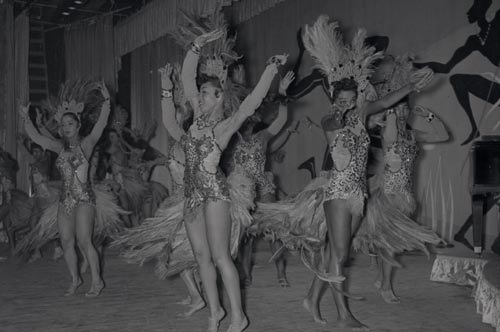
The project designed to capture Black voices in Southern Nevada is officially titled Documenting the African American Experience in Las Vegas. This open-ended design allows the collection of local Black thought to never cease. Additional oral interviews include perspectives on tourism in the Historic Westside by residents who have lived there for decades.
Officially, this collection began before the foundation of the Oral History Research Center. The UNLV history department, headed in the mid-1990 by Dr. Eugene Moehring, began training students and faculty in collecting oral histories in Las Vegas in response to the state funding and oral history program at the University of Nevada, Reno. As the oral history program in the north did not give attention to Southern Nevada, the fastest growing area of the state, student and staff volunteers were trained and decided to collect interviews of Women in Gaming and Entertainment. Claytee White, a history student at the time, decided to interview Black women. The first two interviews were Lucille Bryant from Tallulah, Louisiana and Hazel Gay from Fordyce, Arkansas. The project now contains more than 300 interviews and continues to grow. Once the Oral History Research Center was established in 2003, the African American project was the fourth initiative undertaken.

Lucille Bryant explained the migration of Blacks from the South was still fueling the Great Migration, but now the road out of the South led westward instead of to the north and Midwest. World War II had provided jobs to Blacks primarily at Basic Magnesium Incorporated and in the 1950s at the Nevada Test Site. Additionally, the nascent Las Vegas Strip beckoned Blacks to the back-of-the-house in the hotel and casino industry. Hazel Gay entered retail spaces on Fremont Street as a window dresser while her husband, Jimmy Gay, who had run on the Olympics team of Jesse Owen in 1946, entered a professional position at the Sands, the first Black man to do so. His ambition as a trained and experienced mortician was to open a Black funeral home. The State of Nevada refused to allow him to sit for the exam. In the meantime, he defied the odds and made a success of positions in gaming.
The stories will never end. Today, the original historic home for Blacks, The Westside, is entering a vitalization stage after decades of indifference from the city and county. The community still suffers from that benign neglect of systemic racism. Today, in 2023 the HUNDRED Plan (Historic Urban Neighborhood Design Redevelopment) is being implemented through a new library; a campus of the College of Southern Nevada; rehabilitated housing; two gardens, one hydroponic, designed to turn the area from a food desert to a food oasis; a museum, and a renewed Jackson Avenue, the original business district. Hopes are high, plans are exquisite, and residents are daring to create a bright future for generations to come.
-Claytee White


Oral History Recordings
As part of this exhibition, we are specially including recordings of the actual oral history interviews. See the interviews of Lucille Bryant and Hazel Gay below:
Recording of Lucille Bryant interview
Recording of Hazel Gay interview
Notes:
Bryant, Lucille. “An Interview with Lucille Bryant.” By Claytee White. Oral History Research Center. 13 December 1995.
Gay, Hazel. “An Interview with Hazel Gay.” By Claytee White. Oral History Research Center. 2 December 1995.
Continue learning about the "Documenting the African American Experience in Las Vegas" project here.






